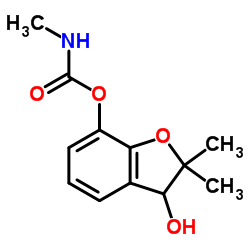| Structure | Name/CAS No. | Articles |
|---|---|---|
 |
3-Hydroxy Carbofuran
CAS:16655-82-6 |
|
 |
carbofuran-3-keto
CAS:16709-30-1 |